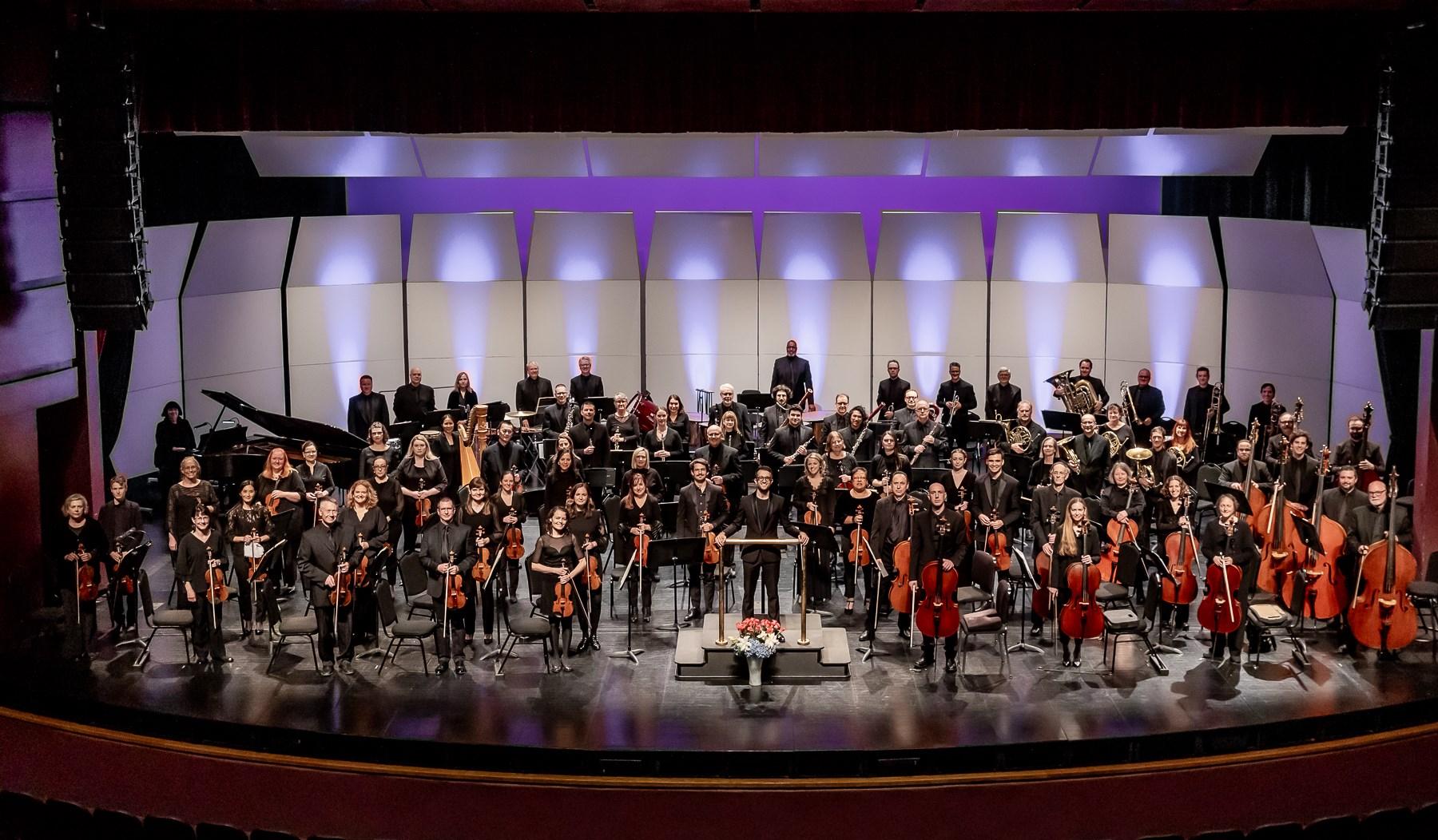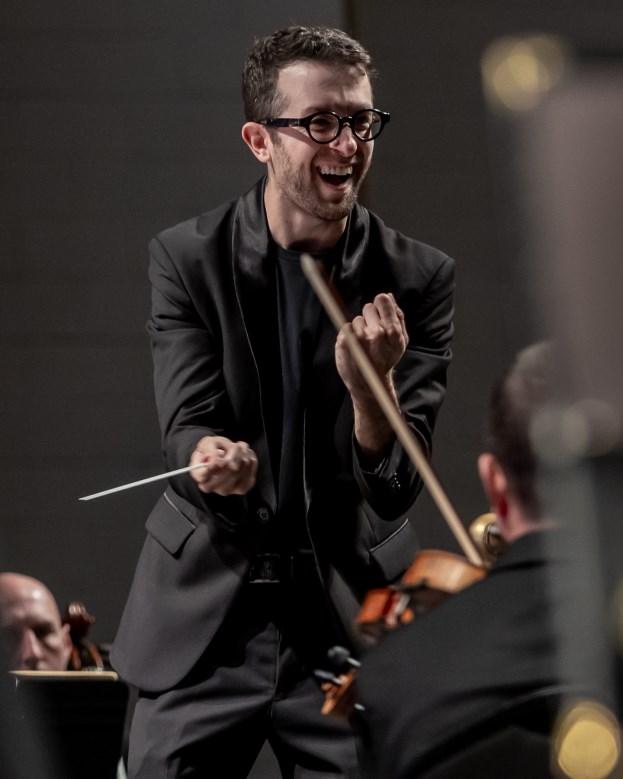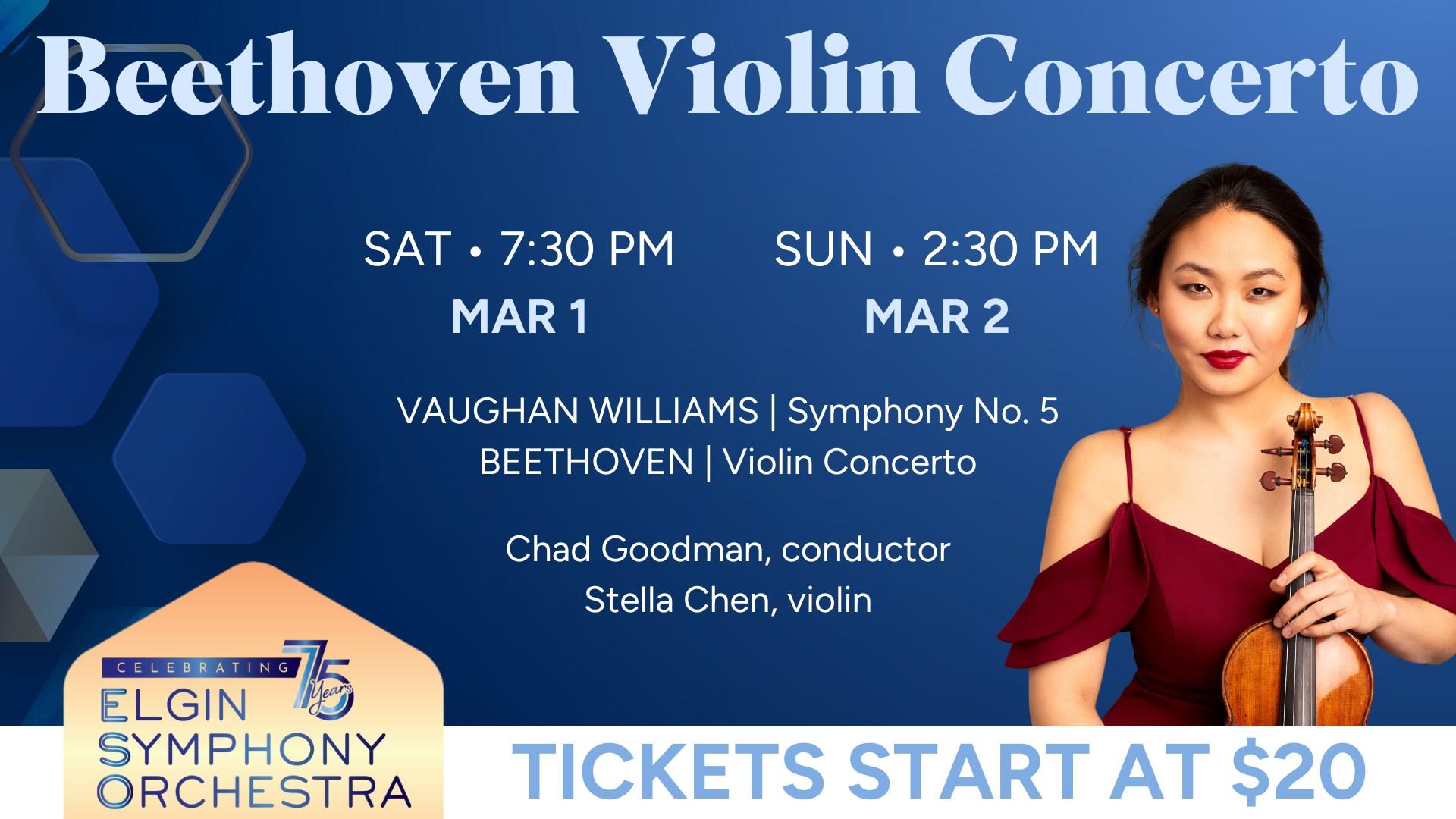ORCHESTRA PERSONNEL/PERSONAL DE LA ORQUESTA
Violin I
Isabella Lippi
Concertmaster
Eleanor Bartsch** Associate
Concertmaster
Gerald Loughney
Kate Carter
Eric Pidluski
Joseph Malmquist
Susan Carlson
Carol Dylan
Helen Kim Lee
Wendy Evans
Carmen Abelson
Jennifer Leckie
Violin II
Daniela Folker
Principal
Robbie Herbst
Assistant Principal
Caroline Slack
Maria Arrua
Susan Thorne
Steve Winkler
Cristina Buciu
Elizabeth Huffman
Kelvin Lin
Meg Lanfear
Kathryn Siegel
**On Leave 2024 ++Season Substitute
Viola
Rebecca Swan Principal
Loretta Gillespie
Assistant Principal
Josef Fischer++
Jason Butler
Erin Rafferty
Sava Velkoff
Susan Posner
Cello
Matthew Agnew Principal
Nazar Dzhuryn
Assistant Principal
Kerena Fox
Mark Kuntz
Robert Weber
Elizabeth Start
Sara Sitzer
Double Bass
Timothy Shaffer** Principal
Jeremy Attanaseo
Assistant Principal
Flute
Jean Bishop Principal
Scott Metlicka
Piccolo
Scott Metlicka
Oboe
James Kim
Guest Principal
Joseph Claude
English Horn
Joseph Claude
Clarinet
Gene Collerd Principal
Trevor O’Riordan
Bassoon
Vincent Disantis Principal
Collin Anderson
French Horn
Trumpet
Ross Beacraft
Principal
Michael Brozick
David Gauger
Assistant Principal
Trombone
Reed Capshaw
Principal
Adam Moen
Bass Trombone
Mark Fry
Tuba
Charles Schuchat Principal
Timpani
Robert Everson Principal
Percussion
Brian Oriente Principal
Michael Folker
ADMINISTRATION/
Chief Executive Officer, Marc Thayer
Extra Musicians
Violin Laura Burns, Betty Lewis, Erik Liljenberg, Pamela Lutter, Joanna Nerius, Nina Saito
Bass David Scholl
Flute Maria Schwartz
Horn Dan O’Connell
Trombone Hugo Saavedra
Bass Trombone Darren Castellanos
Tuba Keith Polito
Percussion Richard Janicki
Vice President of Artistic Planning & Operations, Eric Gaston-Falk
Director of Marketing, Chuck Kocal
Director of Development, Leslie Antoniel
Orchestra Librarian and Digital Marketing Manager, Macauley Manzano
Community Partnerships & Orchestra Personnel Manager, GregHeintz
Patron Services and Office Manager, Luiza Moraes
Public Relations Manager, Donna Lake
Corporate Development Manager, Betty Briceño
Development Coordinator, Jonathan Horn
In Harmony Program Coordinator, LaTrisha Williams
Box Office Assistant, Nicholas Urich
Translator, Elsa Jimenez
MUSIC DIRECTOR / DIRECTOR MUSICAL
Chad Goodman has received widespread praise for thrilling conducting that combines “precision, agility and fervor” (N. Stanić Kovačevic, South Florida Classical Review) and for displaying the “pitch perfect combination of abandon and subtlety” (L. Budman, South Florida Classical Review)
The 2024/25 season marks Goodman’s 2nd season as Music Director of the Elgin Symphony Orchestra only the fifth leader in the orchestra’s prestigious seven-decade history. Concerts with the ESO include Tchaikovsky’s Symphony No.6; Beethoven’s Violin Concerto with Stella Chen; Sibelius’ Symphony No. 5, coupled with Tchaikovsky's Violin Concerto, performed by Samuel Vargas; and Holst’s masterpiece, The Planets.
Goodman holds a Bachelor of Music degree from the Eastman School of Music and a Master of Music degree from San Francisco State University. His mentors include Michael Tilson Thomas and Alasdair Neale.
GUEST ARTIST/ARTISTA INVITADA
A native of Michigan, Matthew Agnew completed early cello studies with Marilyn Kesler, Shirley Mullins (a pronos Starker), and Jane Katsuyama of the Dayton Philharmonic. He attended DePaul University on scholarship and studied with William Cernota from the
As an orchestral player, Matthew serves as the principal cellist of the Elgin Symphony Orchestra, a position he has held since 2002, and plays with several Chicago area orchestras, including Chicago Opera Theater and Chicago Philharmonic Orchestra. In 2005 he was awarded the assistant principal position with the Lancaster Festival Orchestra, a summer festival orchestra in
As a soloist, Matthew has been performing concertos since high school, when he premiered a cello concerto, composed by his father, at the Dayton Art Institute. Since then, he has had the privilege of soloing often with the Elgin Symphony, including concertos by Haydn and Vivaldi, and the Crouching Tiger Cello Concerto by Tan Dun, based on the soundtrack to the movie Crouching Tiger, Hidden Dragon. In February 2020 he performed the Saint-Saëns' First Cello Concerto with the Fox Valley Orchestra, and is looking forward to performing that concerto with the ESO this weekend.
Written by - Daniel Maki
These Worlds in Us Missy
Mazzoli
(b. 1980)
One of the most gratifying aspects of our musical life over the past few decades has been the emergence of several new generations of women composers who have had a major impact on the music of our time. The career of Missy Mazzoli illustrates the point. A native of Lansdale, Pennsylvania, she received her bachelor’s degree from Boston University’s College of Fine Arts and a master’s degree from the Yale School of Music. A Fulbright Grant provided further study in the Netherlands. She discovered her own musical language early, an eclectic style that combines elements of traditional classical technique with jazz, electronic music, and the style known as minimalism. In an astonishingly short time, her work has acquired a world-wide reputation with performances by many leading artists and musical organizations. From 2012 to 2015 she was composer-in-residence at Opera Philadelphia, and in 2017 her opera Breaking the Waves won the Music Critics Association Award for Best New Opera. The work received performances by a number of companies including the Scottish Opera. In 2018 she was nominated for a Grammy Award for Best Classical Composition and began a two-year appointment as Mead-Composer-in-Residence with the Chicago Symphony Orchestra. In 2022 she won Musical America’s Composer-of-the-Year Award. Her opera The Listeners was premiered by the Norwegian National Opera in 2022 and is being performed this season at the Lyric Opera of Chicago. She is one of the first two women to receive a commission from the Metropolitan Opera, which is scheduled for performance on the 2026 season in New York.
In addition to her concert and operatic works, Ms. Mazzoli has ventured into television and film. She composed some of the music for the series Mozart in the Jungle as well as music for several documentary films. She is also active as a performer, serving as founder and keyboardist of the electro-acoustic band Victoire. She has been on the faculty of the Mannes School of Music in New York and is currently Composer-in-Residence at Bard College. These Worlds in Us is an early work which won the 2007 ASCAP Young Composers Award and has personal significance for the
composer. Its title comes from a line in a poem by James Tate, The Lost Pilot, which is a meditation on the death of the poet’s father in World War II. Ms. Mazzoli’s father also was a soldier during the Vietnam War, and she has dedicated the work to him, whose memories of both joy and pain the composer seeks to illustrate musically.
In her own program notes the composer has explained her intention: “I like the idea that music can reflect painful and blissful sentiments in a single note or gesture, and sought to create a sound palette that I hope is at once completely new and strangely familiar to the listener.” The mournful opening theme in the violins soon changes into the effects known as glissandos, a gliding effect as the player slides a finger down the string. The composer has said that she wanted to give “the impression that the piece has been submerged under water or played on a turntable that is grinding to a halt.” An important feature of the work is the sound of the melodicas which are played by the percussionists. According to the composer, these harmonica-like instruments are meant to “mimic the wheeze of a broken accordion, lending a particular vulnerability” to the music. The listener will notice rhythm patterns which come from Balinese music as well as passages of martial character, suggesting the militaristic inspiration of the work.
Cello Concerto No. 1 in A minor, op. 33
Camille Saint-Saëns (1835-1921)
Although in most ways Camille Saint-Saëns was a quintessential Frenchman whose music possessed in abundance the supposedly Gallic qualities of elegance and charm, one of his greatest achievements was the introduction into French musical life of characteristics which, horror of horrors, smacked of Germanness. The disastrous siege of Paris by the Germans during the FrancoPrussian war of 1870 which brought the Second Empire to its conclusion also brought about the resolve to revitalize many aspects of French culture. Saint-Saëns led the charge in music by serving as co-founder of the National Society of Music, an organization which would, he hoped, help to woo the notoriously frivolous French public away from the almost exclusive interest in opera and spectacle which had dominated French musical life during the Second Empire. By reviving interest in the traditional forms of absolute instrumental
music such as the symphony and the concerto, genres which had become virtually the exclusive domain of German music, SaintSaëns, like César Franck, would revitalize French music and bring it back into a position of leadership.
Saint-Saëns would lead by example as well as by precept, and one of his first compositions after the war was the beautiful A minor Cello Concerto, which combines the solidity and structural integrity of the German school with, yes, a certain beguiling French suavity and elegance.
Although the concerto contains the outline of the traditional fast-slow-fast three movement form, like many other nineteenth century composers Saint-Saëns was not afraid to experiment with classical forms. Here he uses the so-called cyclical form, which tries to achieve greater structural unity by telescoping the three parts into a single continuous work and freely borrowing material from one movement into another.
The work opens in dramatic fashion with an immediate statement of the principal theme by the soloist, itself a departure from classical concertos which normally prepare the entry of the soloist with an orchestral introduction. Although the first section will provide two other themes in contrasting character, it is this opening theme, with its dramatic downward sweep of a full two octaves in triplet rhythm, that will dominate the entire concerto.
The stormy first movement gradually diminishes in intensity near its end and finally quietly prepares the way for the contrasting middle section, a graceful minuet of great charm and intimacy. The music almost imperceptibly morphs into a waltz, the soloist plays a brief cadenza, and then a single long note in the cello leads into the finale.
The last section takes us back to the beginning with a reprise of the opening theme before introducing an entirely new theme which exploits to the full the singing expressive quality of the cello. Following this, the technical skill of the soloist is tested in a dazzling series of passages demanding a high level of virtuosity. Other thematic material from the first movement is heard and the concerto drives forward to a brilliant conclusion.
In 1898 James Huneker, one of this country’s most prominent music critics of the period, wrote the following: “The most profound truths, the most blasphemous things, the most terrible ideas, may be incorporated within the walls of a symphony, and the police be none the wiser. It is freedom from the meddlesome hand of the censor that makes of music a playground for great, brave souls.”
Among those great, brave souls was Tchaikovsky, whose sixth and final symphony stands as a particularly striking example of the power of instrumental music to move the emotions at the same time that it remains an abstract art, sometimes concealing as much as it reveals. For centuries philosophers have puzzled over the mystery and the ultimate meaning of music, wondering how it communicates its essence and exactly how that essence relates to the emotions of real life. It would be difficult to find another work which raises these questions more directly than the work which has come to be known as the “Pathétique” Symphony.
The circumstances surrounding the writing and first performances of the Sixth Symphony were so dramatic that even the most shamelessly maudlin Hollywood movie script would be hard put to exaggerate them. While working on the symphony, Tchaikovsky repeatedly said that he had in mind a definite extramusical program, but added cryptically that “it will remain an enigma to all let them guess it who can.” On October 28, 1893, in St. Petersburg, the composer himself conducted the premiere of the new work. What the puzzled audience heard was one of the most original symphonies of the nineteenth century, a work with an enormous range of emotions and laid out on the grandest scale. The most radical feature of this extraordinary work was the adagio finale, which, unlike the customary triumphant ending played fortissimo at a fast tempo and perhaps suggesting some optimistic idea such as mankind’s conquest of fate, ended not with a bang, but with a long diminuendo which trailed off as quietly as possible into the very depths of despair. On the day after the performance Tchaikovsky took the suggestion of his brother Modest to name the work the “Pathétique” Symphony (“with great emotion”). The composer wrote the new title into the score and, although he changed his mind the next day and tried to convince his publisher to rename it, the title would stand. One week later, on November 6, Tchaikovsky died at the age of 53 at the height of his artistic powers, reportedly from cholera after having drunk unboiled water.
Tchaikovsky’s sudden death was a terrible shock not only to Russia’s artistic community but to the public at large. Some 60,000
people applied for tickets to the funeral, but only 8,000 could be crammed into the Kazan Cathedral. On November 18, twelve days after Tchaikovsky’s death, a second performance of the Sixth Symphony took place in memory of the composer. This time the work seemed to have acquired new meaning and produced an overwhelming impression.
The cause of the composer’s death immediately became a controversial issue. Official reports were vague and conflicting and there was widespread skepticism that the cholera epidemic, which was usually seen as a scourge of the lower classes, could have taken away a personage as lofty as the great Tchaikovsky. Rumors that he had committed suicide abounded. Over time, however, these rumors subsided, and the glass of unboiled water theory became the officially sanctioned cause of death, appearing everywhere from weighty scholarly works to highly bowdlerized children’s “Lives of the Great Composers.”
In 1979 the old arguments flared up again with the publication of an article by the Russian musicologist Alexandra Orlova. Ms. Orlova presented the thesis that Tchaikovsky had been forced by his former schoolmates to commit suicide to conceal a homosexual affair and avoid disgracing their school. Although this theory was accepted by some leading Tchaikovsky scholars, it has also been vigorously refuted and remains today a highly controversial issue. At this point, it seems unlikely that the truth about Tchaikovsky’s death will ever be known for certain.
The remaining question, of course, is what all of this has to do with Tchaikovsky’s last symphony. The temptation to hear the work as one long suicide note, or at the very least as a premonition of death, has proven irresistible to many listeners. On the other hand, we would perhaps do well to take heed of one of the most famous and most controversial pronouncements by Tchaikovsky’s countryman Igor Stravinsky. In a remark that has often been misunderstood, Stravinsky famously said that “music can express only itself,” i.e., that music ultimately is beyond any verbal meanings and can only be perceived on its own terms. In the case of Tchaikovsky’s Sixth Symphony, whatever one’s view of the circumstances surrounding the work, at some point it must cease to be autobiography and becomes simply a symphony in B minor, presenting its own drama in the purely musical terms of a large-scale symphonic work. As one of the greatest such works (it was Tchaikovsky’s favorite among his own symphonies), that is more than enough.
(Incidentally, the aforementioned Stravinsky was present at the memorial performance of the Sixth Symphony as an elevenyear-old boy. He attended with his father, a distinguished basso who had known Tchaikovsky and had sung many of his operatic roles.)
The opening movement of the symphony is of epic proportions, beginning with a slow introduction which immediately sets the tone of high pathos. The main allegro portion of the movement begins with its rather nervous principal theme stated first in the violas and then echoed by flutes. The famous second theme in D major, one of Tchaikovsky’s best loved melodies, forms its own self-contained episode, beginning with a beautiful clarinet solo, and then trailing off into the softest of diminuendi. The stormy development section begins with a thunderclap, immediately taking the movement into new directions. In addition to developing material already heard, the composer introduces a new, somber theme taken from the Russian Orthodox Requiem. Eventually the music works its way back to a condensed recapitulation of the opening part of the movement and closes with a coda featuring a chorale-like melody in the brass heard over pizzicato strings.
The second and third movements, respectively a waltz and a march, change the tone abruptly. As anyone acquainted with Tchaikovsky’s ballet music knows, Tchaikovsky was one of the best waltz composers of his time. Here he offers the novel effect of using 5/4 time instead of the usual three-to-a-bar, producing an effect which is at once graceful and curiously lopsided. The march movement is a brilliantly scored episode which presents us enormous vitality, if not actual joy.
After such brilliant diversion, the slow finale brings us back to tragic reality. The novelty of this movement can hardly be overstated, causing the great English critic and musicologist Sir Donald Francis Tovey to call it “a stroke of genius which solves all the artistic problems that have proved most baffling to symphonic writers since Beethoven.” The movement presents two primary themes, the first an outcry of desperation in B minor, the second an attempt at consolation in D major. The consolation fails, however, and the music trails off quietly, ending as it began in the depths of despair and leaving questions unanswered.
Thanks to our Sponsors



















